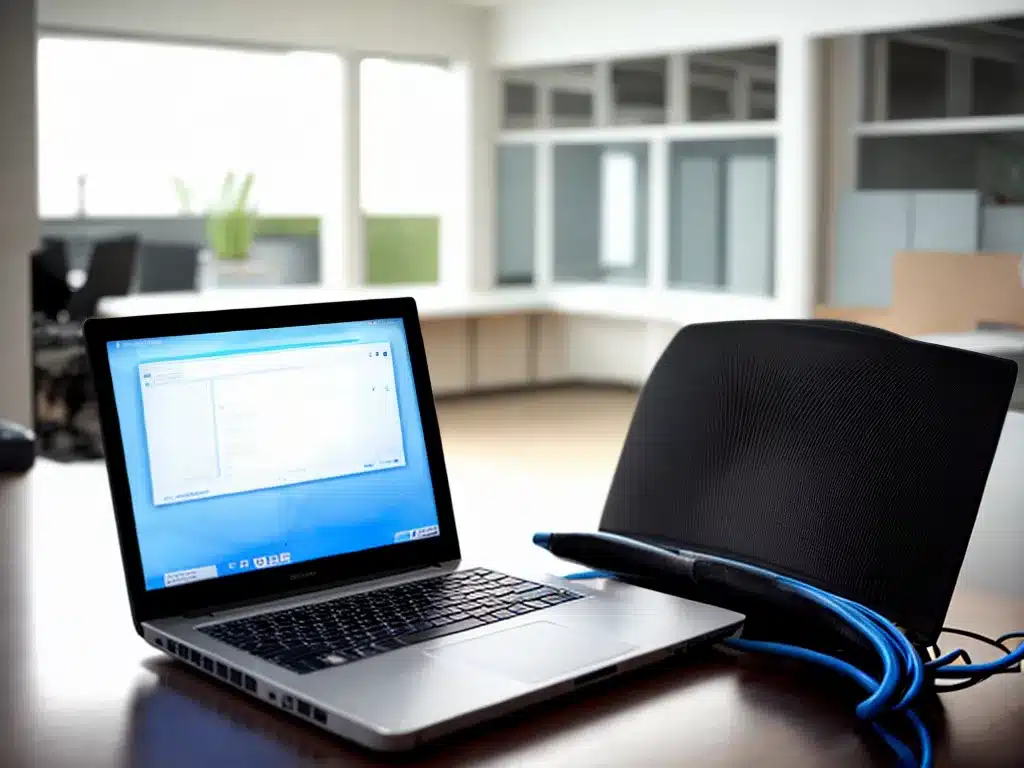Symptoms of an Overheating Laptop
I notice my laptop getting unusually hot when I have multiple programs open or I’ve been using it for an extended period. Some common symptoms of an overheating laptop include:
- The bottom and palm rest area feeling hot to the touch
- Loud fan noises as the laptop tries to cool itself down
- Sluggish performance and lagging when doing tasks
- Random shutdowns or the laptop abruptly turning off
- Warning messages that the laptop is overheating
If I experience any of these issues, it’s a sign my laptop is overheating and I need to troubleshoot the problem. Excessive heat can damage the laptop’s components over time so it’s important to address it.
Common Causes of Overheating
There are several potential causes of a laptop overheating. Here are some of the most common culprits I should investigate:
- Dust buildup: Dust and pet hair can accumulate and clog the laptop’s air vents over time. This prevents proper airflow and ventilation.
- Blocked air vents: Similar to dust buildup, having something covering the air vents like a blanket or book can block airflow.
- Running resource-intensive programs: Programs like games, video editing software, and streaming videos use a lot of processing power which generates more heat.
- Faulty cooling fan: If the internal cooling fan stops working properly, the laptop can’t regulate its temperature effectively.
- Internal component failure: Failed components like the CPU or GPU overworking can cause excessive heat.
I should assess when overheating occurs and which programs or situations seem to trigger it to narrow down the potential cause. Checking the laptop’s air vents for blockages is also a good first step.
How to Troubleshoot an Overheating Laptop
Here are the steps I take to properly diagnose and address an overheating laptop:
1. Close Any Open Programs
First, I close any open apps, browsers, or programs that are running. Even background apps use processing power that contributes to heat. Closing them allows the computer to cool down.
2. Check the Air Vents
Next, I inspect my laptop’s air vents (typically located along the sides, bottom, under the keyboard, and behind the screen). I check for dust buildup and use compressed air to blow out any debris. Blocked vents are a common culprit, so clearing them can help.
3. Elevate the Laptop
Raising the laptop up allows for better air circulation underneath. I place it on a solid, hard surface and use a laptop cooler or prop it up on something stable. Improved airflow means better cooling.
4. Adjust the Power Settings
I go to the Power Options settings and make sure my laptop isn’t set to “High Performance”. This forces it to run full power all the time, generating more heat. I switch to “Balanced” which optimizes performance and cooling.
5. Update Drivers and Programs
I check for any pending Windows, driver, firmware, and software updates to install. Updates sometimes include fixes for overheating laptops and improved efficiency. Keeping drivers up to date is important.
6. Clean out the Internal Components
If overheating persists, I may need to open the laptop case and use compressed air to clean out accumulated dust on the internal hardware and components. This involves following the manufacturer’s disassembly instructions carefully. Thoroughly cleaning the inside can remove heat-trapping particles.
7. Replace the Thermal Paste
The CPU relies on thermal paste to transfer heat effectively to the heatsink. Over time, this paste can dry out or lose efficacy. Replacing old paste with fresh paste on the CPU can drastically lower temperatures. Proper disassembly and careful application of the paste is crucial.
8. Repair or Replace Broken Components
For persistent hardware-related overheating, I may need to replace a broken internal component like the cooling fan. A failed CPU or GPU may require replacement by the manufacturer. Repairing or replacing damaged internal laptop parts can resolve overheating issues.
Preventing Laptop Overheating
Here are some good practices to help avoid overheating problems:
- Keep the air vents clear of dust, fabrics, and debris
- Use the laptop on solid flat surfaces for maximum airflow
- Limit gaming, videos, and other processor-intensive apps
- Shut down rather than sleep when not in use for long periods
- Clean out the internal components every 6-12 months
- Replace the thermal paste every 2-3 years
Following proper laptop maintenance habits prevents overheating and extends my laptop’s lifespan. Keeping the vents unobstructed and internal components clean is key.
When to Seek Professional Repair
If I’ve tried these troubleshooting steps without success, it’s a sign I may need professional repair:
- Laptop still overheats when performing basic tasks
- Overheating when improperly closing apps or blocking vents
- Loud fan noises or other physical symptoms persist
- Errors about temperature even after updates, cleaning, and thermal paste replacement
A computer repair technician can fully diagnose hardware-related overheating issues and identify solutions like fixing the cooling fan or replacing damaged parts. For complex overheating problems beyond my troubleshooting capabilities, seeking professional laptop repair is advised.
Conclusion
Overheating laptops can slow down performance and cause serious damage over time if left unchecked. By proactively monitoring for symptoms, assessing potential causes, and methodically trying different solutions, I can troubleshoot and fix overheating problems. Simple maintenance like air vent cleaning greatly helps, but major internal damage may require professional support. With the right preventative care, my laptop can operate at peak efficiency without overheating.













